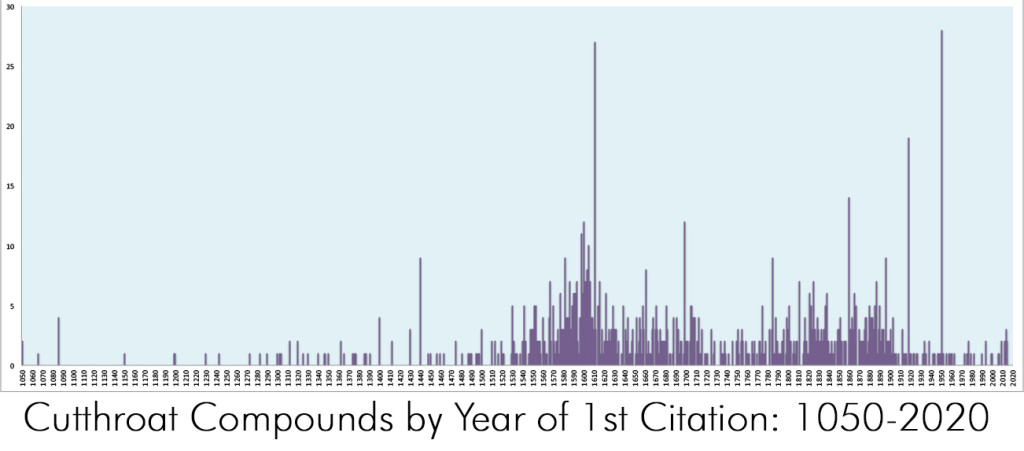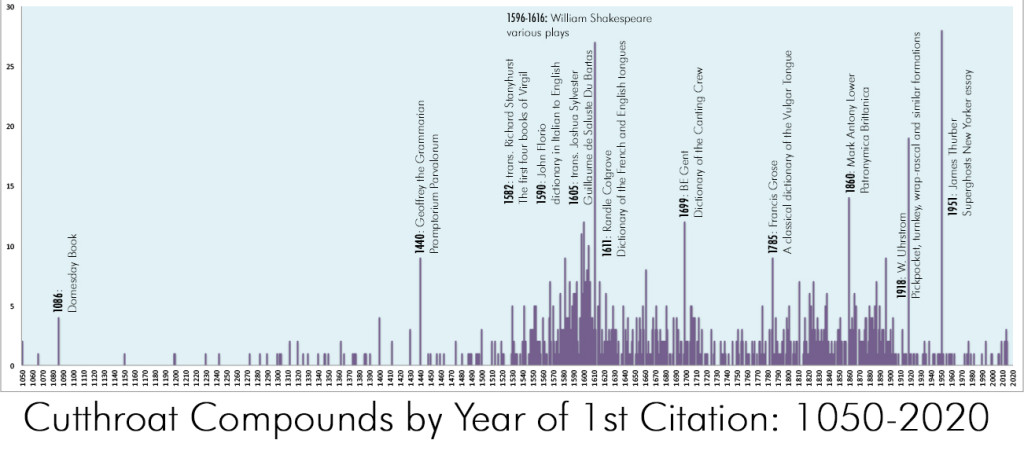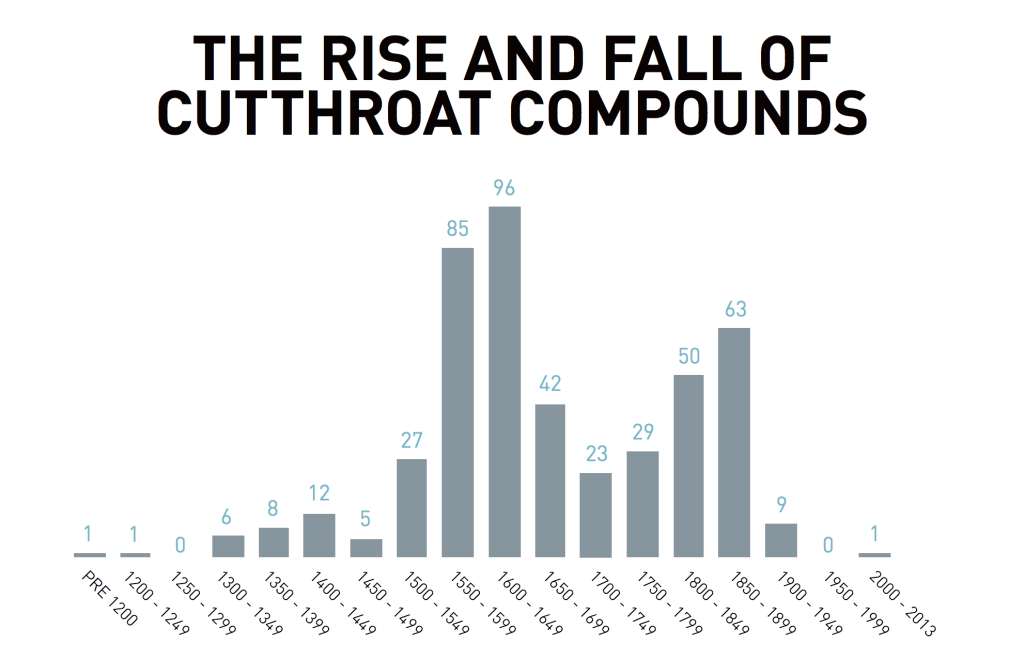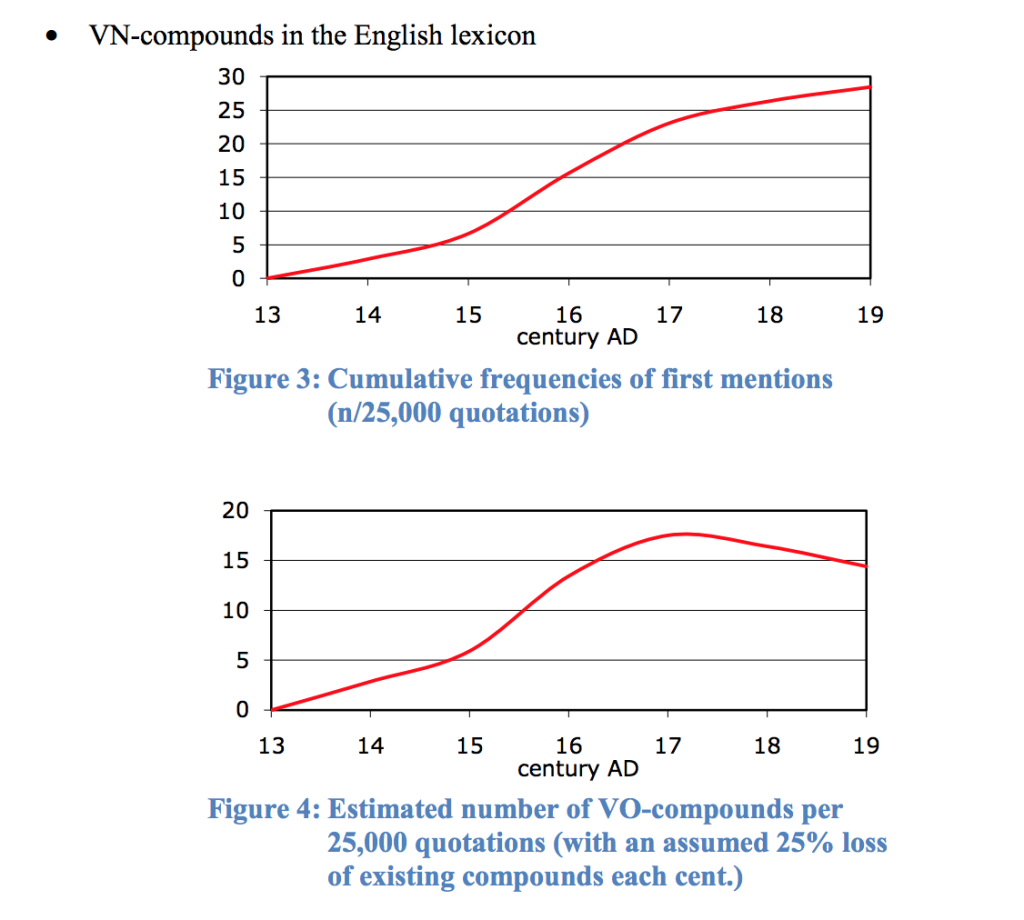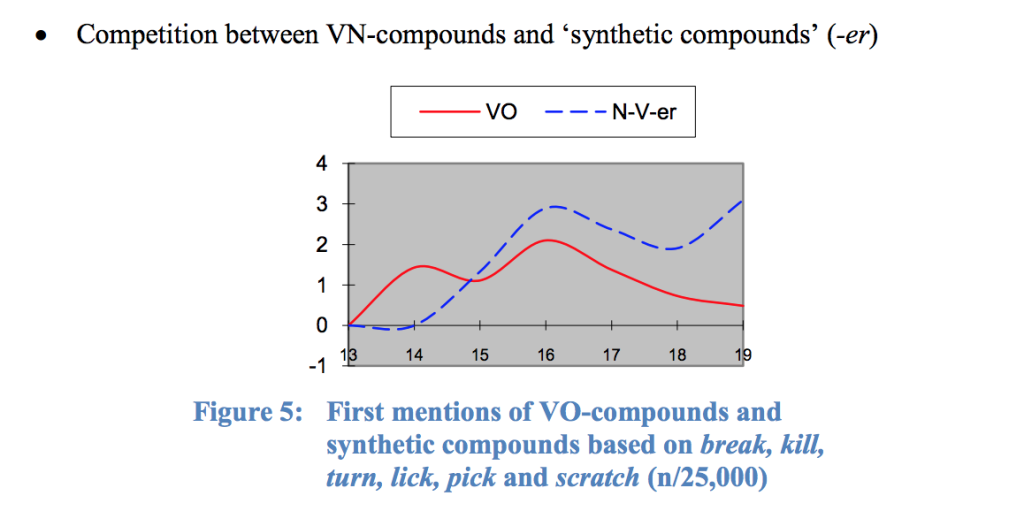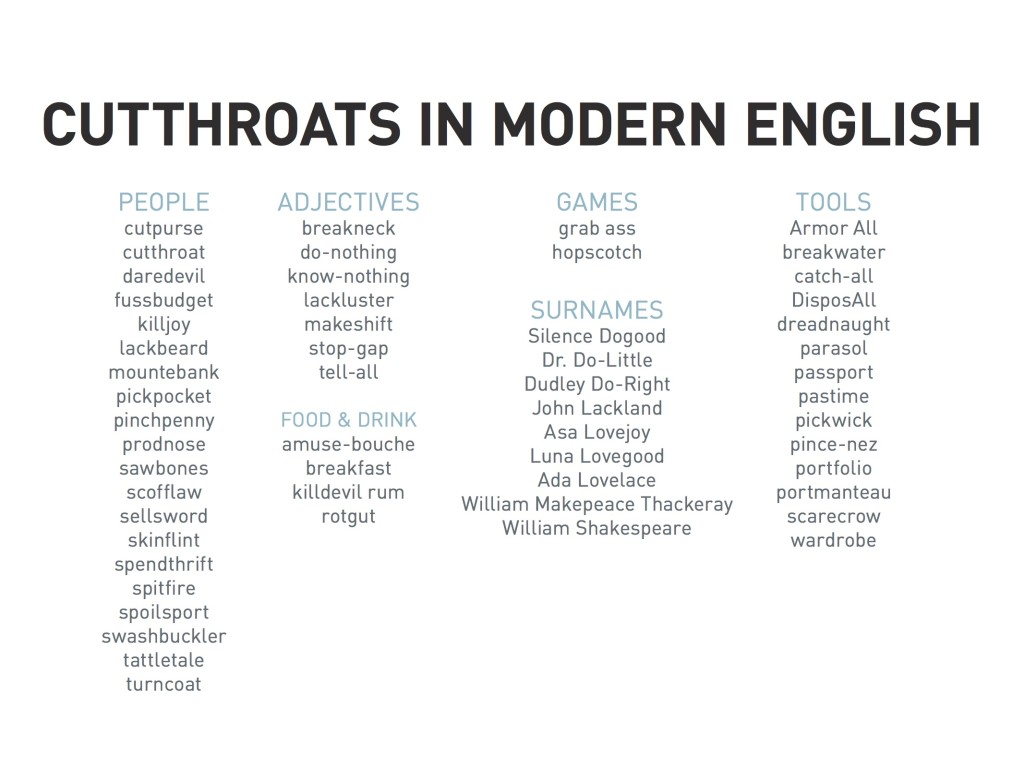Does a Slingshot Sling Shots?
Difficulties in Identifying English Cutthroat Compounds
Cutthroats are agentive and instrumental exocentric verb-noun [V+N] compounds that name people and objects by describing their function (i.e., a cutthroat is a person who cuts throats). They are composed of a transitive verb and its direct object. Cutthroats are freely productive in Romance languages, which have a V.O. (verb-object) structure and are left-headed. English, which is V.O. and right-headed, has slight native productivity (Clark et al, 1986) that has been amplified and augmented by French borrowings (e.g., coupe-gorge and wardecorps). English has been slowly producing new cutthroats since the 1200s up through 2015, mainly in the form of nonce personal insults. Most cutthroats are obsolete slang, but about 40, including pickpocket, pinchpenny, rotgut and spitfire, are commonly known in Modern English.
Gast (2008) compiled a database of “over 400” cutthroat compounds. Using his references, Hughes (2012) created a separate database with 483 cutthroats. In subsequent research, that list expanded to 815 compounds, 50 of which (slingshot, bundletail, rattle-head, etc.) currently lack the evidence to be definitively classified as cutthroats.
Classifying the structure of a compound in any language is more complicated than it appears, especially when the evidence is only available in dictionaries, where there is little context. The two constituents in a compound can have any possible relationship, but lack the syntactic markers (which are available in larger phrases and sentences) to show it. There is no formula that determines how compound components relate to each other. Languages rely on features such as headedness, gender, case, and word class markers to guide their readers to the intended meaning.
The English language does not feature gender, case, or a regular use of word class markers. This has resulted in high productivity of synthetic compounding patterns such as [N+V+er] and [V+ing+N], which use suffixes to compensate for the ambiguity unleashed by homonyms and zero derivation. Headedness, then, is the only reliable attribute in the pursuit of understanding English compounds. However, cutthroats are exocentric, and therefore headless.
How, then, is it possible to find 815 compounds from a rare pattern, and positively identify them without the benefit of syntactic markers? The answer lies in taking advantage of the restricted tendencies of English cutthroats, namely the semantic clumping of certain verbs, nouns, and topics.
Some topics such as criminals, misers, drunks, and children’s games appear again and again, while many others have never been observed. Verbs also clump (break, turn, make, lack, kill), with the top 11 verbs accounting for 150 compounds alone. Nouns recur as well, the most common being water, penny, devil, and nothing.
Locating cutthroats is a difficult task on its own, since the topics covered within the pattern are not found in standard dictionaries or in well-documented fields such as law, religion, or medicine. Instead, cutthroats are memorable vulgar insults, occupational surnames, and regional terms for plants and animals. Therefore, any document in English with ties to the vernacular may be a source of forgotten cutthroats, and can be explored using the following method:
With the OED Online as the starting point, the 260 known verbs in the pattern are searched in reference materials such as dictionaries of criminal cant and surname databases. Synonyms of those verbs are also searched, often resulting in new finds. In digital databases, where searches are not limited by alphabetical listing, new cutthroats may also be found using common nouns and topics. Progress is made by alternately pursuing leads from each of these three clusters. In one example, kill-priest (port wine) led to strangle-priest, strangle-goose, saddle-goose, and saddle-nag. The high productivity of [kill+N] and compounds related to the clergy led to a search of other [strangle+N] compounds, then [V+goose] compounds, and finally [saddle+N] compounds. Research continues in this manner, constantly expanding and strengthening the web of cutthroat verbs, nouns, and topics.
With each new connection, more cutthroat candidates are rediscovered, and the membership of previously indeterminate cutthroats can be decided. The current list of questionable compounds will likely increase with further searches, then contract as new data integrates them into the pattern. Further work can be done by seeking new cutthroats, analyzing the expanded database, and exploring Romance cutthroats, all in an effort to advance the understanding of this shadowy footnote of English morphology.
Read More →
